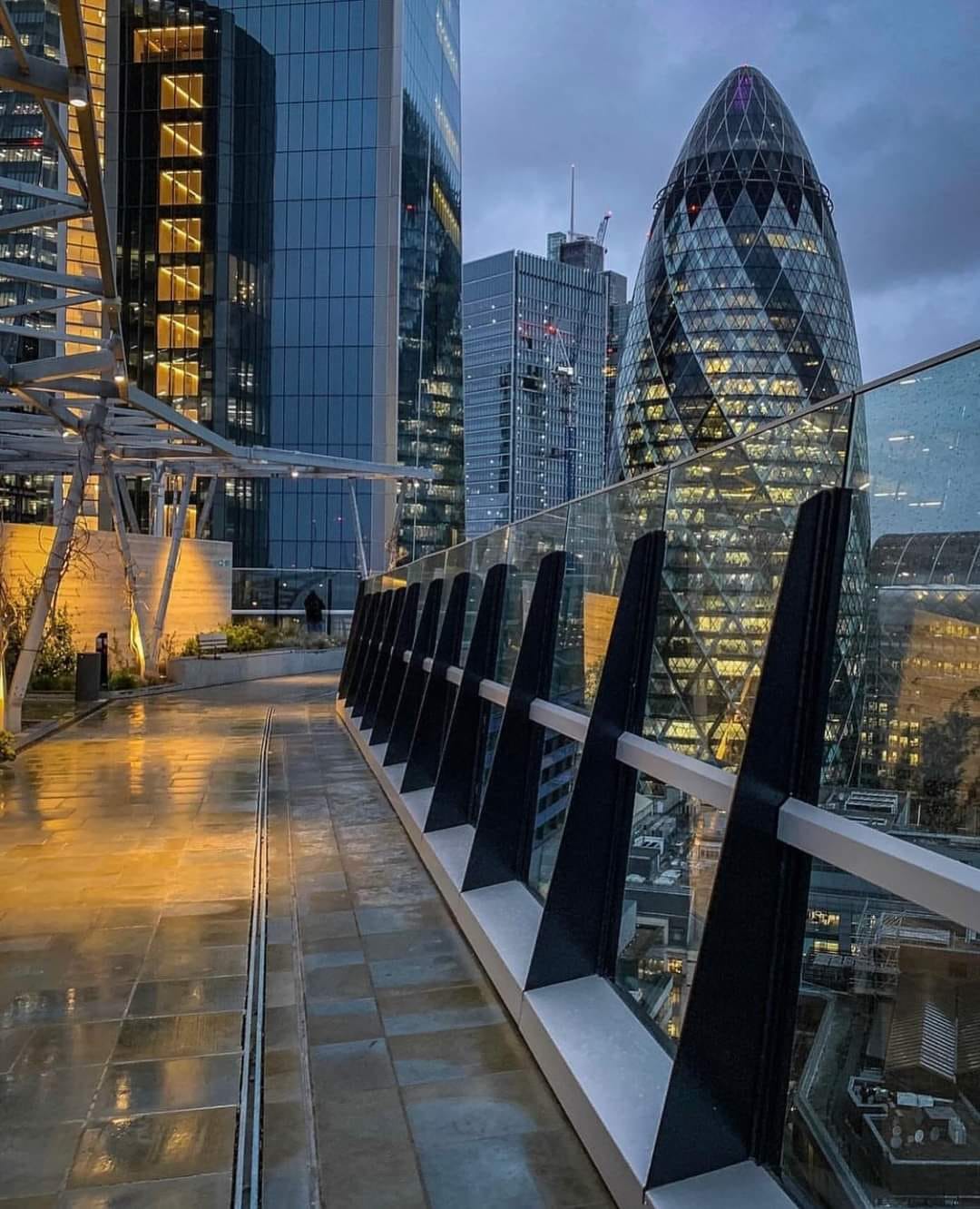Events
| Name | organizer | Where |
|---|---|---|
| MBCC “Doing Business with Mongolia seminar and Christmas Receptiom” Dec 10. 2025 London UK | MBCCI | London UK Goodman LLC |
NEWS

Bagakhangai-Khushig Valley Railway Project to Be Implemented in Two Stages www.montsame.mn
During its regular session on February 12, 2025, the Cabinet of Mongolia authorized the State Property Policy and Regulation Department, Erdenes Tavan Tolgoi JSC, Mongolian Railway state-owned JSC, and Tavan Tolgoi Railway LLC to finance the Bagakhangai-Khushig Valley Railway Project with the net profit of “Mongolian Railway” JSC and “Tavan Tolgoi Railway” LLC in 2024, investments in 2025, and leveraging domestic resources.
“Mongolian Railway” Company will be responsible for the construction and operation of the Bagakhangai-Khushig Valley Railway in compliance with relevant laws, international standards, and quality requirements.
The Bagakhangai-Kushig Valley Railway will branch from the Bagakhangai station of the "Ulaanbaatar Railway" JV and pass through Selenge soum of Tuv aimag to Khushig Valley and reach Shuvuun Fabric, for a total of 102.8 km. The railway is planned to have three stations and four junctions. The project will be implemented in two phases.
The relevant officials have been instructed to promptly issue the technical conditions and relevant permits required for the construction of the railway infrastructure, and its components, including engineering facilities, energy, water supply, stations, crossings, and other buildings, according to the appropriate regulations.
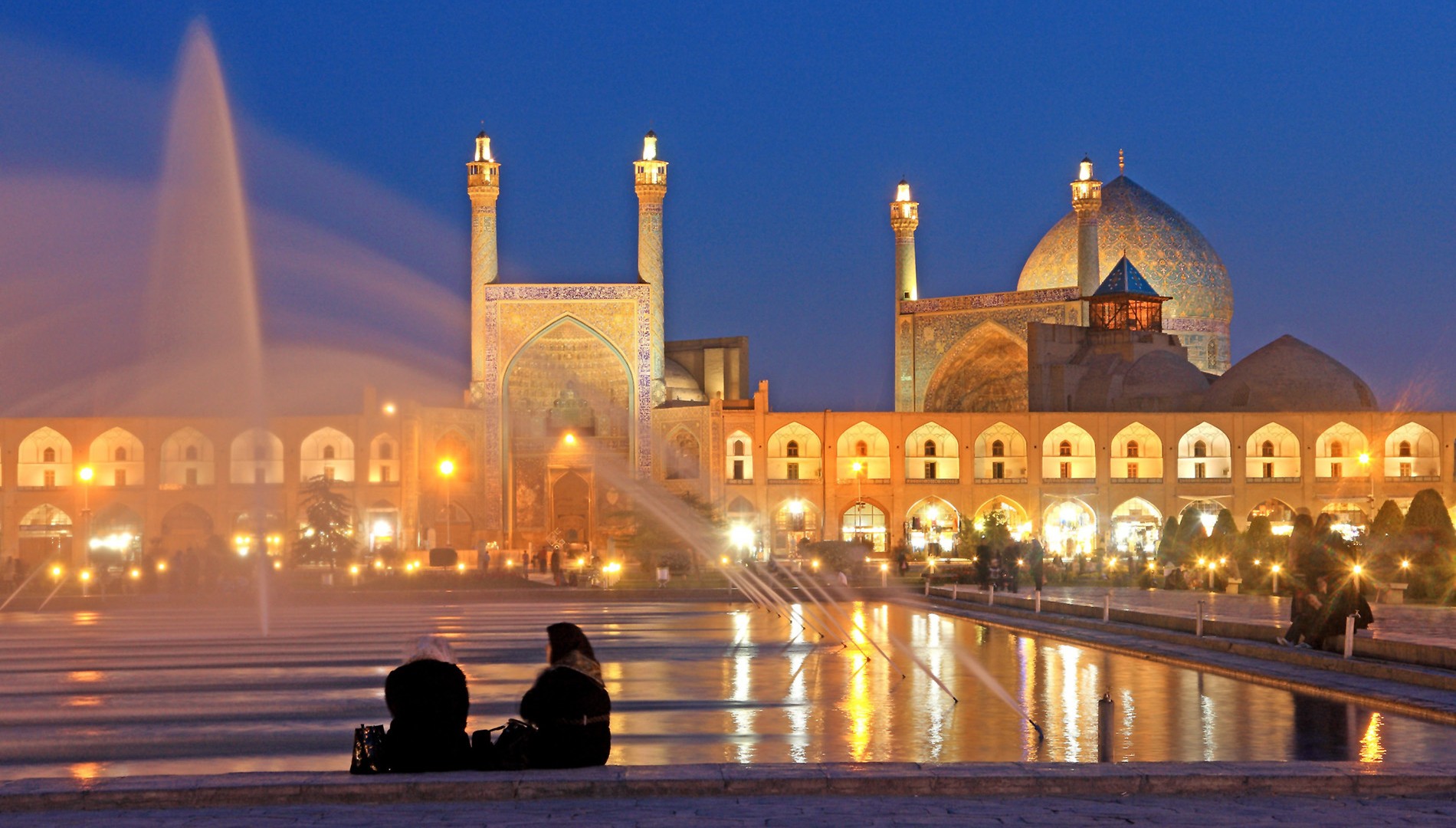
Mongolia welcomes cooperation with IRCS www.tehrantimes.com
Secretary General of the Mongolian Red Cross Society, Bolormaa Nordov, has voiced Mongolia’s readiness to expand cooperation with the Iranian Red Crescent Society (IRCS).
Lauding the capabilities of IRCS in addressing hazards, Nordov said, “Mongolia is one of the most disaster-prone areas in the world, with harsh winter. We are interested in benefiting from the experiences, and capacities of the Iranian Red Crescent Society, particularly in providing relief services,” Mehr news agency reported.
The official made the remarks on Tuesday in an online meeting with the head of the IRCS, Pirhossein Kolivand.
“The Mongolian Red Cross Society is responsible for people’s health and well-being. We are willing to utilize the Iranian Red Crescent Society's knowledge in medical and pharmaceutical sectors, as well,” Nordov further noted.
Highlighting the significance of boosting synergy among international societies, Kolivand, for his part, proposed running a joint university to train participants on the critical actions required to respond to emergencies, disasters, and accidents.
Establishing joint medical centers, pharmaceutical and textile companies, as well as launching health tourism comprehensive centers were among other suggested issues for the expansion of collaborations.
The official went on to say that the IRCS quick response teams are ready to provide assistance to other societies in any part of the world, highlighting that one of the main objectives of the IRCS is to educate and empower other societies.
Signing a memorandum of understanding will facilitate and lay the basis for furthering cooperation, Kolivand added.
IRCS is a top organization
In September 2024, the International Federation of Red Cross and Red Crescent Societies (IFRC) project manager, Faisal Mahboob, lauded the capabilities of the IRCS as outstanding.
The official said he was really impressed by the capacity and the wide range of activities carried out by the IRCS.
“The International Federation will support the activities of the Iranian Red Crescent Society to commence a new phase of collaboration with the society,” Mahboob added, the IRCS website reported.
In May 2024, Pir-hossein Kolivand, head of the IRCS, said the IRCS is recognized as one of the five prominent societies worldwide thanks to its wide range of activities and great achievements both nationally and internationally.
Referring to health, treatment, and rehabilitation as one of the parts of the IRCS activities, Kolivand said the IRCS hospitals, pharmacies, and clinics meet the medical and therapeutic needs of thousands of citizens every day.
The IRCS medical centers abroad are reputable worldwide. As a humanitarian organization, the IRCS is trying to alleviate the suffering of the people involved in accidents, emergencies, and conflicts.
“Today, collaborations with knowledge-based firms have resulted in advancements in manufacturing orthoses, prostheses, artificial organs, and new medications, with plans to extend cooperation to rescue and relief efforts as well,” the official noted.
IRCS signs MOUs with 19 societies over three years
The IRCS has signed memorandums of understanding with red crescent societies of 19 countries over the past three years to expand and enhance cooperation in humanitarian as well as rescue and relief operations.
The IRCS looks forward to boosting cooperation with other societies to promote awareness, resilience, and capabilities of the societies in confrontation with disasters and the provision of relief services.
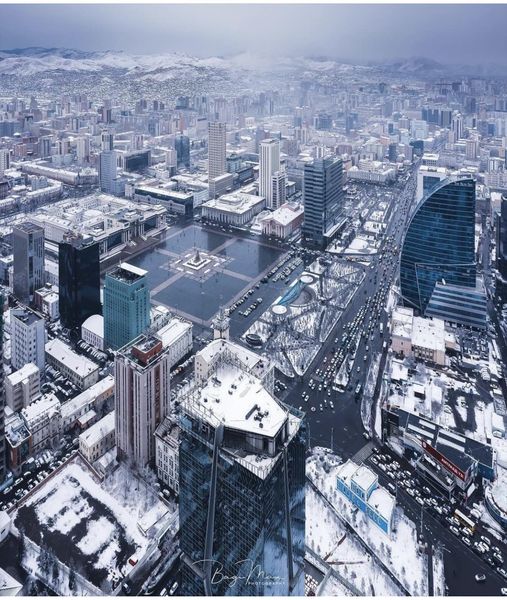
Mongolia's inflation rate climbs to 9.6 pct in January www.xinhuanet.com
Mongolia's inflation rate, as measured by the Consumer Price Index (CPI), rose to 9.6 percent in January, up from 9.0 percent in December 2024, local media reported on Thursday, citing official data by the country's National Statistics Office (NSO).
This represents a 2.0 percentage-point rise compared to the same period last year, the NSO noted. The increase in inflation was primarily driven by higher prices for imported goods, particularly food products, according to the statistical agency.
Mongolia's consumer goods and services basket comprises 410 items, with over half of them being imported, the NSO said.
Despite the recent inflationary pressures, the government remains optimistic about the country's economic outlook and has forecast an inflation rate of around 7.2 percent for 2025.
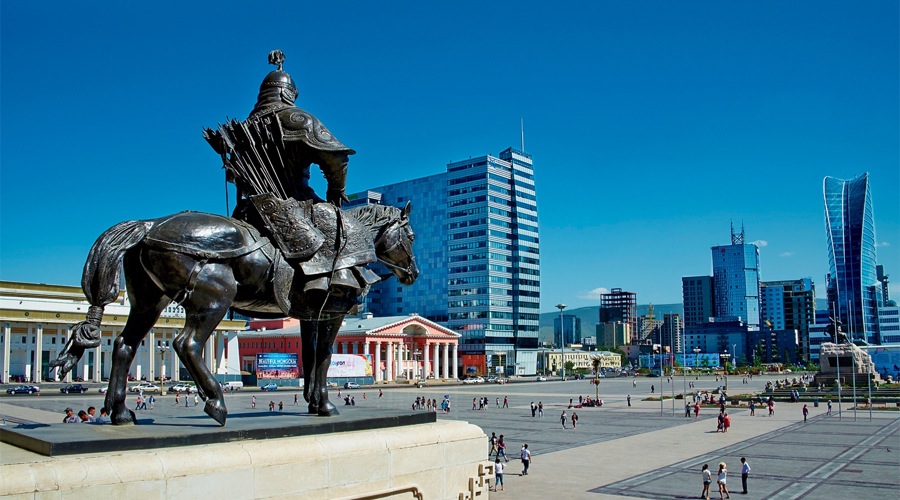
Mongolia becomes first country in Asia to join web platform for political finance transparency www.akipress.com
The Open Government Partnership (OGP) Asia and the Pacific Regional Meeting was held in the Philippines on February 5-7, Montsame reported.
During the meeting, Head of the Office of the General Election Commission (GEC) of Mongolia D. Bat-Erdene, and Foreign Relations and Cooperation Officer B. Uyanga, participated in ministerial level discussions, interviews, and meetings, where the officials introduced electoral legal reforms and shared experiences of Mongolia.
The General Election Commission of Mongolia has become the first in Asia to join the Open Government Partnership's newly launched Online Platform for Publishing Political Finance Data, which has been in effect since 2024. The OGP's oversight committee reviewed the GEC’s initiative and officially certified Mongolia's participation during the conference.
More than 800 representatives from governments, civil societies, and international organizations across the Asia-Pacific region participated in the Open Government Partnership Asia and the Pacific Regional Meeting Philippines 2025. Discussions focused on strengthening democracy, enhancing transparency and accountability in governance, and addressing challenges in implementing open and transparent government initiatives in the region, according to the GEC.
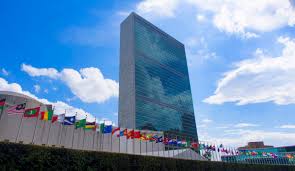
UNDP Advocates for Enhanced Gender Integration in Mongolia’s Climate Action www.undp.org
UNDP’s “Climate Promise-2” project, funded by the Government of Germany, organized the “Advancing Gender Integration in Climate Action: Insights from the Gender Target Gap Assessment” workshop to raise awareness of ongoing efforts in developing Nationally Determined Contributions (NDC) 3.0, with a particular focus on integrating gender considerations into climate policies and actions.
The workshop brought together diverse stakeholders from sectoral ministries, development partners, civil society organizations, and experts to present key findings from the Gender Target Gap Assessment. Participants also discussed gaps, challenges, and opportunities for mainstreaming gender in climate policies and emphasized the need for stronger gender-responsive indicators in Mongolia’s NDCs and explored ways to enhance collaboration for more inclusive and equitable climate action.
Mongolia's effort and commitment to developing NDC 3.0 and adopting the Long-Term Low Emission Development Strategy (LT-LEDS), a national strategy for economy-wide transformation toward low-emission, climate-resilient development, reflects its dedication to global climate goals.
Under the Climate Promise 2025 Initiative, the UN, including UNDP, is supporting countries in aligning NDC 3.0 with the 1.5°C global target and the Sustainable Development Goals, while strengthening their quality, investment potential, and implementation. Through the "Climate Promise–2" project, UNDP has been supporting Mongolia in developing more gender-sensitive and inclusive climate commitments, ensuring alignment with the country’s long-term development priorities under Vision 2050.
Ms. Lakshmi Boojoo, Advisor on Gender Issues to the Minister for Environment and Climate Change, stated “Gender-responsive climate policies are key to ensuring that no one is left behind in Mongolia’s transition to a low-emission and climate-resilient future. Today’s workshop presents a platform to address gaps, enhance commitments, and advance inclusive climate action.”
UNDP Deputy Resident Representative in Mongolia Ms. Lin Cao stated “This year marks the 10th Anniversary of the Paris Agreement, and it is critical to demonstrate that its promises are not only viable but transformative. Achieving this will require not just ambition but also tangible financial investments and stronger partnerships—both public and private—to show a clear pathway forward on climate action and SDG achievement. Every country has a role to play, and Mongolia’s contribution is vital.”
***
About UNDP
UNDP is the leading United Nations organization fighting to end the injustice of poverty, inequality, and climate change. Working with our broad network of experts and partners in 170 countries, we help nations to build integrated, lasting solutions for people and planet.
For further inquiries:
Erdenesukh Otgonbayar | Communications Analyst | UNDP in Mongolia | erdenesukh.otgonbayar@undp.org

How the Curtailing of US Aid Impacts Mongolia’s Development www.thediplomat.com
Since Mongolia’s democratization in the 1990s, USAID has been a major supporter of the country’s development. With USAID’s future in doubt, Ulaanbaatar is watching closely.
President Donald Trump began his second term in the Oval Office by making abrupt shifts in U.S. foreign policy, including halting all foreign aid for 90 days. In addition, Trump’s decision to gut the United States Agency for International Development (USAID) and the realignment of U.S. priorities in international development will directly impact Mongolia-U.S. cooperative programs, although it ultimately will not strain the Mongolia-U.S. strategic partnership.
On January 26, 2025, Trump signed an Executive Order on Reevaluating and Realigning United States Foreign Aid. The U.S. State Department press statement on implementing the order emphasized, “The United States is no longer going to blindly dole out money with no return for the American people.” The 90-day review will likely be a multistage process that will trim down specific programs and projects that are not aligning with the Trump administration’s international goals. What this means for Mongolia is that many of the U.S.-funded projects that support gender equity, environmental and wildlife protection, as well as academic and research funding are likely to be on the chopping block.
Since the dawn of Mongolia’s democratization in the 1990s, USAID has been a major supporter of Mongolia’s development. The agency supported Mongolia in strengthening democratic governance, civil society and financial institutions, as well as bolstering its economy and private sector competitiveness. According to U.S. government data, over $20.4 million in foreign assistance has been provided to Mongolia since 2001, with $6.6 million of that coming from USAID.
According to a summary from the U.S. embassy in Mongolia:
USAID assistance has spanned a variety of priority areas, including developing the energy sector, helping to establish and strengthen major banking institutions, providing humanitarian assistance, promoting small businesses and diversifying income in rural areas, and spurring inclusive participation in the democratic process.
Moreover, USAID funds academic and scholarly communities both in the United States and Mongolia. These activities ultimately strengthen cultural and people-to-people relations between Americans and Mongolians. Cutting USAID funds will have direct impact on anthropology, archaeology, and other research-based programs and projects.
U.S.-funded projects not only help with Mongolia’s overall development, but directly impact ordinary’s people’s lives.
Jonathan Addleton, who served as the U.S. ambassador to Mongolia from 2009 to 2012, pointed to the outsized impact of USAID in Mongolia particularly. “I would maintain that both USAID and Mongolia have ‘punched well above their weight’ during the last two decades,” he told The Diplomat, pointing to Mongolia’s success “in applying foreign assistance from all sources to move a better place with respect to GDP, per capita income, and the amount of revenue generated internally to finance a ‘real’ budget as compared to the tiny national budgets of the 1990s.”
Commenting on the recent development, Michael Klecheski, who served as the U.S. ambassador to Mongolia during the first Trump administration, stated, “Curtailing U.S. assistance work throughout the world will have an impact on our international image, but I believe the U.S.-Mongolia relationship will remain strong, as we continue to have important shared interests.”
Klecheski added, “Given Mongolia’s geostrategic position, good ties with the U.S. and other ‘third neighbors’ are vital to it. And after all, when Trump was president last time, he had a terrific visit from Mongolia’s then-President Battulga Khaltmaa. I trust that remains significant to this White House.”
Mongolia and the United States became strategic partners in 2019, during Trump’s first term as president. While the strategic partnership implied economic cooperation, U.S. aid to Mongolia dropped significantly during the Trump administration, from $46 million in 2018 to $12 million in 2020. At the same time, it is important to highlight that the United States did provide approximately 24.8 billion Mongolian tugrik ($8 million) to Mongolia to support its effort to combat COVID-19.
During the Biden administration, U.S. aid continued to flow to Mongolia’s developmental projects. In 2023, USAID announced a five-year strategy for Mongolia, particularly targeting the energy sector, banking institutions, and strengthening democratic values within the framework of sustainable development. As the Trump administration reviews the USAID five-year strategic framework for Mongolia (2023-2028), Ulaanbaatar should expect projects in gender equality, environmental issues, as well as public health sectors will likely be impacted.
Moreover, with recent actions, there is a worry that the Millennium Challenge Corporation (MCC) Mongolia Water Compact may be impacted, despite the fact that the project is almost complete. The MCC project is a joint program between Mongolia and the United States, with both committing large sums to address Mongolia’s critical water supply challenges in Ulaanbaatar. The MCC’s $462 million pledge – $350 million from the MCC, and $112 million from Mongolia – will go toward the improvement of water infrastructure in Ulaanbaatar, including new wells, a water purification plant, and a wastewater treatment plant. As of September 2024, $305.5 million or 87.3 percent of the U.S. grant has been committed to projects; of that $214.8 million (61.4 percent) has already been disbursed.
The latest allocation of USAID to Mongolia was $13 million, just before Biden left office.
In the face of increasing uncertainty over Trump’s foreign policy and international outreach, policymakers in Ulaanbaatar are paying attention. The United States’ relationship with Mongolia has focused on what is known as the the “3D” approach: defense, diplomacy, and development. To some degree, if the development element gets dropped, Mongolia would still have defense and diplomacy to pursue cooperation with the United States. Of the U.S. assistance to Mongolia since 2001, 37 percent was aimed at military goals.
On February 7, Mongolian Defense Minister Byambatsogt Sandag visited the U.S. Indo-Pacific Command in Hawaii. During a meeting between Byambatsogt and the U.S. Army Lt. Gen. Joshua M. Rudd, deputy commander of U.S. Indo-Pacific Command, Mongolia focused on welcoming the new Trump administration. The two sides discussed defense ties and how the Mongolia-U.S. cooperation mechanism should continue and uphold its strategic significance.
According to the Mongolia’s embassy in the United States during the meeting, Mongolia highlighted its commitment and goal to triple the number of peacekeepers, with an eye toward the technical assistance and human resources needed to achieve this goal.
As the Mongolia-U.S. strategic partnership comes to a new starting point, Ulaanbaatar does have an opportunity to push Washington to pass the long-anticipated Third-Neighbor Trade Act, while accelerating U.S. investment in Mongolia’s critical minerals, tourism, technology, and science sectors.
Trump’s decision to either abolish USAID or drastically reduce funding will impact projects and programs in Mongolia. His actions are also a wakeup call for the Mongolian government not to solely depend on foreign aid for its development.
That said, it is also important note that one of the strengths of Mongolia’s multi-pillared foreign policy is that it has a number of different partners helping to support the country’s democracy, civil society, gender equity, public health, and business environment. Multilateral mechanisms and organizations such as the United Nations Development Program, UNICEF, and to some degree, the American Chamber of Commerce could serve as alternative funding sources within this multi-donor system.
By Bolor Lkhaajav
Bolor Lkhaajav is a researcher specializing in Mongolia, China, Russia, Japan, East Asia, and the Americas. She holds an M.A. in Asia-Pacific Studies from the University of San Francisco.
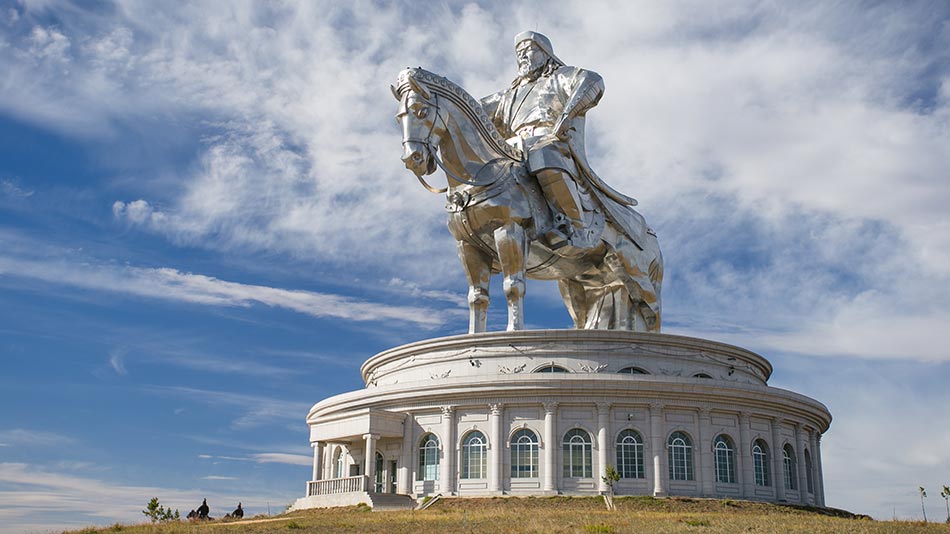
Mongolia’s “Tourism Week-2025”: Charting the Path for Two Million Annual Visitors by 2030 www.montsame.mn
As part of the “Years to Visit Mongolia 2024-2028” Initiative, the Ministry of Culture, Sports, Tourism, and Youth of Mongolia, in collaboration with the Mongolia Tourism Organization, is organizing the “Tourism Week-2025” on February 10-15, 2025.
The “Tourism Week-2025” brings together representatives from 30 public organizations, 1,200 private sector companies, 85 NGOs, research institutions, and professional associations, as well as 30 international organizations, serving as a dynamic platform for discussing the achievements, challenges, and future development strategies of the tourism industry of Mongolia.
Notable figures, including Minister of Culture, Sports, Tourism, and Youth of Mongolia Nomin Chinbat, President of the Mongolia Tourism Organization T. Battulga, Chair of the Board of Directors of the Mongolia Tourism Organization B. Zolbadrakh, and officials from the Tourism Policy Implementation Department of Ulaanbaatar City, delivered speeches. Esteemed international guests, such as Regional Director of Adventure Travel Trade Association (ATTA) Hannah Pearson, and Professor at Sejong University Dr. Seul Kee Li, also shared their invaluable perspectives on the global tourism landscape.
At the Opening Ceremony, Minister Nomin Chinbat highlighted several major achievements in the tourism sector from the previous year. A notable milestone was Mongolia’s formal partnership with Trip.com, a platform with 500 million users, enabling travelers to easily book flights to Mongolia and purchase tourism products and services. Moreover, the Minister emphasized, “Mongolia has been named an official partner at the “China International Travel Mart” and has earned accolades from globally renowned travel publications such as “Lonely Planet” and “Wanderlust,” which have ranked Mongolia among the top destinations to visit in 2024. These efforts have contributed to a remarkable 126 percent increase in positive perceptions of Mongolia internationally.
In an effort to boost air travel accessibility, aviation agreements have been signed with key countries, facilitating direct flights to 155 destinations as of 2024. Mongolia also achieved a historical milestone by surpassing 2 million air travelers. As part of this, United Airlines, a major airline company in the United States, is to commence direct flights to Mongolia in May 2025.
In line with visa policy simplifications, citizens from 32 countries can now visit Mongolia without a visa, while citizens from 36 countries are eligible for e-visa applications. Collaborative efforts with international media organizations such as CNN, BCC, and influential global content creators have notably enhanced Mongolia’s international profile.
Mongolia is seeking to welcome two million tourists annually by 2030 and double the average expenditure per tourist from USD 2,000 to USD 4,000. This ambitious target could generate up to USD 8 billion in tourism revenue, contributing 10 percent to the country’s GDP. To reach this target, Mongolia's tourism sector must maintain an annual growth rate exceeding 15 percent, supported by cohesive strategies, sustainable investments, and inter-sectoral coordination.”
Furthermore, Chair of the Board of Directors of the Mongolia Tourism Organization B. Zolbadrakh noted, “Since the launch of the “Years to Visit Mongolia” initiative in 2023, the tourism sector of Mongolia has seen a remarkable 23-percent growth, which is an impressive achievement by any standard. The upcoming discussions during the event will focus on how to build on this success, with particular attention to promoting year-round tourism and integrating it with regional development strategies to reach one million tourists annually.”
President of the the Mongolia Tourism Organization T. Battulga highlighted, “While growth metrics remain essential, the quality of the tourist experience is equally crucial. Enhancing the length of stay and enriching the travel experience are top priorities. Developing region-specific tourism strategies and fostering collaboration between the public and private sectors will be vital to realizing these goals.”
Regional Director of Adventure Travel Trade Association Hannah Pearson shared, “This is my second time in Mongolia. For me, my purpose for participating in the “Tourism Week-2025” event is to share how the "Adventure Travel Trade Association" sees adventure travel, the trends, and how that can support Mongolia and its aims to develop tourism.
The strengths of Mongolia's tourism sector are the amazing landscapes, the culture, and the spiritual side as well. There is a lot that Mongolia has to offer. On the other hand, Mongolia seems to have challenges in the private sector. Connectivity seems to be one of the big challenges. Moreover, another issue is seasonality. The fact that a lot of travelers come in the summer and not in the winter might be a challenge. However, I believe adventure travel can help address the seasonality because adventure travelers love to travel in the shoulder season. They don’t mind the extreme temperatures. So it is definitely an opportunity. Adventure Travel Trade Association brings vast expertise in helping destinations position themselves as globally attractive travel hubs.
Although my experience in Mongolia is still relatively limited, I went out to the steppes, where we rode horses. This might be the typical experience for tourists visiting Mongolia, but this experience was quite unique. I think experiences like that, perhaps even more off the beaten track, even more engagement in local cultures and nomadic life, should really attract tourists to visit Mongolia.”
Number of Tourists Visiting Mongolia Rises by 23 Percent www.montsame.mn
The "Tourism Week-2025" commenced on February 10, 2025, with the "Regional Development and Tourism" Forum.
The Ministry of Culture, Sports, Tourism, and Youth of Mongolia and the Mongolia Tourism Organization are jointly organizing this Forum for the second year to strengthen coordination within Mongolia's tourism sector and enhance collaboration between the public and private sectors. Participants are discussing the sector's pressing challenges, potential solutions, and pathways forward. They emphasized that tourism plays a vital role in economic growth and development, highlighting the importance of continuous innovation and reform, as well as the need for timely and efficient cross-sector information sharing to foster sustainable tourism.
The tourism industry in Mongolia came to a standstill during the pandemic, incurring losses of MNT 1.6 trillion. However, it has since rebounded, with revenue increasing by 65 percent. In 2023, Mongolia generated USD 1.2 billion in tourism revenue, and in 2024, the country welcomed 808,956 tourists, earning USD 1.6 billion.
Minister of Culture, Sports, Tourism, and Youth of Mongolia Nomin Chinbat noted, "Tourism revenue has increased 2.8 times compared to 2022. Last year, we launched a partnership with Trip.com, enabling international travelers to book flights to Mongolia and purchase travel services directly. Additionally, to expand transportation capacity for tourists, we signed agreements on aviation relations with several countries and actively worked on securing flight permits. As a result, direct flights are now available to a total of 155 destinations. For the first time in history, Mongolia’s air transport sector has served over 2 million passengers. Of the tourists visiting Mongolia, 47 percent are interested in eco and adventure tourism. Solo travel is becoming a global trend, making it essential for us to develop such experiences in line with international standards. Additionally, as artificial intelligence continues to advance in a big way, integrating technologies such as chatbots into our operations is crucial.”
CEO of the Mongolia Tourism Organization M. Narangerel highlighted, "Mongolia has an extreme climate, but travel and outdoor activities are possible year-round, not just in summer. In January alone, we welcomed 33,462 tourists, the highest number ever recorded in the winter season, demonstrating the growing interest in Mongolia’s winter tourism. To develop four-season tourism, we need to systematically improve infrastructure, attract investment, and train a skilled workforce. One of the key challenges in this industry is domestic air travel, particularly the capacity of national flag carriers. Given Mongolia’s vast territory, flying is the only viable option to reach certain destinations. However, high flight costs make it difficult to design competitive tourism packages."
Mongolia is seeking to welcome 2 million tourists annually by 2030 and increase tourism revenue to USD 8 billion. To achieve this, the country plans to develop tourism in regional clusters. For example, the central region will be developed as a sub-region focused on diversified agriculture and industry, while the eastern region will be developed as a specialized area for historical tourism and intensive agriculture.
Over 1,000 representatives from more than 600 businesses in the tourism sector are participating in the "Tourism Week 2025" event. Throughout this week, they will engage in discussions on topics such as tourism strategy, infrastructure, destination services, and product development.

Foreign Currency Reserves of Mongolia Stand at Approximately USD 4.9 Billion www.montsame.mn
As of the end of 2024, Mongolia’s foreign currency reserves reached an all-time high of USD 5.5 billion. However, the current reserves stand at approximately USD 4.9 billion.
On average, exchange rate fluctuations tend to occur at certain times of the year, particularly in September and October when business activities increase, and during the Lunar New Year when demand rises. Recently, factors such as increased outbound tourism and automobile imports have also contributed to these fluctuations. Additionally, the seasonal slowdown of certain mining operations has led to a reduced inflow of foreign currency.
The Bank of Mongolia reported that it has fulfilled all foreign currency purchase orders from commercial banks in full and that operations remain stable.
As of February 10, 2025, the official exchange rate of USD announced by the Bank of Mongolia was MNT 3,455.89.

Breastfeeding rates decline in Mongolia: study www.xinhuanet.com
Breastfeeding rates in Mongolia have been declining, according to survey results released by the country's health ministry on Tuesday.
The Ministry of Health and the National Center for Public Health, with support from UNICEF, conducted the VI National Survey on the Nutritional Status of the Population in 2023-2024 to assess and improve the nation's nutritional status.
The survey included more than 16,000 people from all 21 provinces of Mongolia, including about 2,800 children under the age of 5.
It revealed that the percentage of newborns receiving colostrum immediately after birth has decreased from 96.7 percent in 1999 to 87.4 percent in 2024.
Additionally, the proportion of children exclusively breastfed for up to six months has dropped significantly, from 93.4 percent in 1999 to 59.6 percent in 2024.
The survey also found that seven out of 10 children aged six to 23 months in Mongolia are not eating properly. Half of these children are not consuming the right variety of foods at the right frequency for their age, and 31.8 percent do not eat fruits and vegetables at all.
- «
- 1
- 2
- 3
- 4
- 5
- 6
- 7
- 8
- 9
- 10
- 11
- 12
- 13
- 14
- 15
- 16
- 17
- 18
- 19
- 20
- 21
- 22
- 23
- 24
- 25
- 26
- 27
- 28
- 29
- 30
- 31
- 32
- 33
- 34
- 35
- 36
- 37
- 38
- 39
- 40
- 41
- 42
- 43
- 44
- 45
- 46
- 47
- 48
- 49
- 50
- 51
- 52
- 53
- 54
- 55
- 56
- 57
- 58
- 59
- 60
- 61
- 62
- 63
- 64
- 65
- 66
- 67
- 68
- 69
- 70
- 71
- 72
- 73
- 74
- 75
- 76
- 77
- 78
- 79
- 80
- 81
- 82
- 83
- 84
- 85
- 86
- 87
- 88
- 89
- 90
- 91
- 92
- 93
- 94
- 95
- 96
- 97
- 98
- 99
- 100
- 101
- 102
- 103
- 104
- 105
- 106
- 107
- 108
- 109
- 110
- 111
- 112
- 113
- 114
- 115
- 116
- 117
- 118
- 119
- 120
- 121
- 122
- 123
- 124
- 125
- 126
- 127
- 128
- 129
- 130
- 131
- 132
- 133
- 134
- 135
- 136
- 137
- 138
- 139
- 140
- 141
- 142
- 143
- 144
- 145
- 146
- 147
- 148
- 149
- 150
- 151
- 152
- 153
- 154
- 155
- 156
- 157
- 158
- 159
- 160
- 161
- 162
- 163
- 164
- 165
- 166
- 167
- 168
- 169
- 170
- 171
- 172
- 173
- 174
- 175
- 176
- 177
- 178
- 179
- 180
- 181
- 182
- 183
- 184
- 185
- 186
- 187
- 188
- 189
- 190
- 191
- 192
- 193
- 194
- 195
- 196
- 197
- 198
- 199
- 200
- 201
- 202
- 203
- 204
- 205
- 206
- 207
- 208
- 209
- 210
- 211
- 212
- 213
- 214
- 215
- 216
- 217
- 218
- 219
- 220
- 221
- 222
- 223
- 224
- 225
- 226
- 227
- 228
- 229
- 230
- 231
- 232
- 233
- 234
- 235
- 236
- 237
- 238
- 239
- 240
- 241
- 242
- 243
- 244
- 245
- 246
- 247
- 248
- 249
- 250
- 251
- 252
- 253
- 254
- 255
- 256
- 257
- 258
- 259
- 260
- 261
- 262
- 263
- 264
- 265
- 266
- 267
- 268
- 269
- 270
- 271
- 272
- 273
- 274
- 275
- 276
- 277
- 278
- 279
- 280
- 281
- 282
- 283
- 284
- 285
- 286
- 287
- 288
- 289
- 290
- 291
- 292
- 293
- 294
- 295
- 296
- 297
- 298
- 299
- 300
- 301
- 302
- 303
- 304
- 305
- 306
- 307
- 308
- 309
- 310
- 311
- 312
- 313
- 314
- 315
- 316
- 317
- 318
- 319
- 320
- 321
- 322
- 323
- 324
- 325
- 326
- 327
- 328
- 329
- 330
- 331
- 332
- 333
- 334
- 335
- 336
- 337
- 338
- 339
- 340
- 341
- 342
- 343
- 344
- 345
- 346
- 347
- 348
- 349
- 350
- 351
- 352
- 353
- 354
- 355
- 356
- 357
- 358
- 359
- 360
- 361
- 362
- 363
- 364
- 365
- 366
- 367
- 368
- 369
- 370
- 371
- 372
- 373
- 374
- 375
- 376
- 377
- 378
- 379
- 380
- 381
- 382
- 383
- 384
- 385
- 386
- 387
- 388
- 389
- 390
- 391
- 392
- 393
- 394
- 395
- 396
- 397
- 398
- 399
- 400
- 401
- 402
- 403
- 404
- 405
- 406
- 407
- 408
- 409
- 410
- 411
- 412
- 413
- 414
- 415
- 416
- 417
- 418
- 419
- 420
- 421
- 422
- 423
- 424
- 425
- 426
- 427
- 428
- 429
- 430
- 431
- 432
- 433
- 434
- 435
- 436
- 437
- 438
- 439
- 440
- 441
- 442
- 443
- 444
- 445
- 446
- 447
- 448
- 449
- 450
- 451
- 452
- 453
- 454
- 455
- 456
- 457
- 458
- 459
- 460
- 461
- 462
- 463
- 464
- 465
- 466
- 467
- 468
- 469
- 470
- 471
- 472
- 473
- 474
- 475
- 476
- 477
- 478
- 479
- 480
- 481
- 482
- 483
- 484
- 485
- 486
- 487
- 488
- 489
- 490
- 491
- 492
- 493
- 494
- 495
- 496
- 497
- 498
- 499
- 500
- 501
- 502
- 503
- 504
- 505
- 506
- 507
- 508
- 509
- 510
- 511
- 512
- 513
- 514
- 515
- 516
- 517
- 518
- 519
- 520
- 521
- 522
- 523
- 524
- 525
- 526
- 527
- 528
- 529
- 530
- 531
- 532
- 533
- 534
- 535
- 536
- 537
- 538
- 539
- 540
- 541
- 542
- 543
- 544
- 545
- 546
- 547
- 548
- 549
- 550
- 551
- 552
- 553
- 554
- 555
- 556
- 557
- 558
- 559
- 560
- 561
- 562
- 563
- 564
- 565
- 566
- 567
- 568
- 569
- 570
- 571
- 572
- 573
- 574
- 575
- 576
- 577
- 578
- 579
- 580
- 581
- 582
- 583
- 584
- 585
- 586
- 587
- 588
- 589
- 590
- 591
- 592
- 593
- 594
- 595
- 596
- 597
- 598
- 599
- 600
- 601
- 602
- 603
- 604
- 605
- 606
- 607
- 608
- 609
- 610
- 611
- 612
- 613
- 614
- 615
- 616
- 617
- 618
- 619
- 620
- 621
- 622
- 623
- 624
- 625
- 626
- 627
- 628
- 629
- 630
- 631
- 632
- 633
- 634
- 635
- 636
- 637
- 638
- 639
- 640
- 641
- 642
- 643
- 644
- 645
- 646
- 647
- 648
- 649
- 650
- 651
- 652
- 653
- 654
- 655
- 656
- 657
- 658
- 659
- 660
- 661
- 662
- 663
- 664
- 665
- 666
- 667
- 668
- 669
- 670
- 671
- 672
- 673
- 674
- 675
- 676
- 677
- 678
- 679
- 680
- 681
- 682
- 683
- 684
- 685
- 686
- 687
- 688
- 689
- 690
- 691
- 692
- 693
- 694
- 695
- 696
- 697
- 698
- 699
- 700
- 701
- 702
- 703
- 704
- 705
- 706
- 707
- 708
- 709
- 710
- 711
- 712
- 713
- 714
- 715
- 716
- 717
- 718
- 719
- 720
- 721
- 722
- 723
- 724
- 725
- 726
- 727
- 728
- 729
- 730
- 731
- 732
- 733
- 734
- 735
- 736
- 737
- 738
- 739
- 740
- 741
- 742
- 743
- 744
- 745
- 746
- 747
- 748
- 749
- 750
- 751
- 752
- 753
- 754
- 755
- 756
- 757
- 758
- 759
- 760
- 761
- 762
- 763
- 764
- 765
- 766
- 767
- 768
- 769
- 770
- 771
- 772
- 773
- 774
- 775
- 776
- 777
- 778
- 779
- 780
- 781
- 782
- 783
- 784
- 785
- 786
- 787
- 788
- 789
- 790
- 791
- 792
- 793
- 794
- 795
- 796
- 797
- 798
- 799
- 800
- 801
- 802
- 803
- 804
- 805
- 806
- 807
- 808
- 809
- 810
- 811
- 812
- 813
- 814
- 815
- 816
- 817
- 818
- 819
- 820
- 821
- 822
- 823
- 824
- 825
- 826
- 827
- 828
- 829
- 830
- 831
- 832
- 833
- 834
- 835
- 836
- 837
- 838
- 839
- 840
- 841
- 842
- 843
- 844
- 845
- 846
- 847
- 848
- 849
- 850
- 851
- 852
- 853
- 854
- 855
- 856
- 857
- 858
- 859
- 860
- 861
- 862
- 863
- 864
- 865
- 866
- 867
- 868
- 869
- 870
- 871
- 872
- 873
- 874
- 875
- 876
- 877
- 878
- 879
- 880
- 881
- 882
- 883
- 884
- 885
- 886
- 887
- 888
- 889
- 890
- 891
- 892
- 893
- 894
- 895
- 896
- 897
- 898
- 899
- 900
- 901
- 902
- 903
- 904
- 905
- 906
- 907
- 908
- 909
- 910
- 911
- 912
- 913
- 914
- 915
- 916
- 917
- 918
- 919
- 920
- 921
- 922
- 923
- 924
- 925
- 926
- 927
- 928
- 929
- 930
- 931
- 932
- 933
- 934
- 935
- 936
- 937
- 938
- 939
- 940
- 941
- 942
- 943
- 944
- 945
- 946
- 947
- 948
- 949
- 950
- 951
- 952
- 953
- 954
- 955
- 956
- 957
- 958
- 959
- 960
- 961
- 962
- 963
- 964
- 965
- 966
- 967
- 968
- 969
- 970
- 971
- 972
- 973
- 974
- 975
- 976
- 977
- 978
- 979
- 980
- 981
- 982
- 983
- 984
- 985
- 986
- 987
- 988
- 989
- 990
- 991
- 992
- 993
- 994
- 995
- 996
- 997
- 998
- 999
- 1000
- 1001
- 1002
- 1003
- 1004
- 1005
- 1006
- 1007
- 1008
- 1009
- 1010
- 1011
- 1012
- 1013
- 1014
- 1015
- 1016
- 1017
- 1018
- 1019
- 1020
- 1021
- 1022
- 1023
- 1024
- 1025
- 1026
- 1027
- 1028
- 1029
- 1030
- 1031
- 1032
- 1033
- 1034
- 1035
- 1036
- 1037
- 1038
- 1039
- 1040
- 1041
- 1042
- 1043
- 1044
- 1045
- 1046
- 1047
- 1048
- 1049
- 1050
- 1051
- 1052
- 1053
- 1054
- 1055
- 1056
- 1057
- 1058
- 1059
- 1060
- 1061
- 1062
- 1063
- 1064
- 1065
- 1066
- 1067
- 1068
- 1069
- 1070
- 1071
- 1072
- 1073
- 1074
- 1075
- 1076
- 1077
- 1078
- 1079
- 1080
- 1081
- 1082
- 1083
- 1084
- 1085
- 1086
- 1087
- 1088
- 1089
- 1090
- 1091
- 1092
- 1093
- 1094
- 1095
- 1096
- 1097
- 1098
- 1099
- 1100
- 1101
- 1102
- 1103
- 1104
- 1105
- 1106
- 1107
- 1108
- 1109
- 1110
- 1111
- 1112
- 1113
- 1114
- 1115
- 1116
- 1117
- 1118
- 1119
- 1120
- 1121
- 1122
- 1123
- 1124
- 1125
- 1126
- 1127
- 1128
- 1129
- 1130
- 1131
- 1132
- 1133
- 1134
- 1135
- 1136
- 1137
- 1138
- 1139
- 1140
- 1141
- 1142
- 1143
- 1144
- 1145
- 1146
- 1147
- 1148
- 1149
- 1150
- 1151
- 1152
- 1153
- 1154
- 1155
- 1156
- 1157
- 1158
- 1159
- 1160
- 1161
- 1162
- 1163
- 1164
- 1165
- 1166
- 1167
- 1168
- 1169
- 1170
- 1171
- 1172
- 1173
- 1174
- 1175
- 1176
- 1177
- 1178
- 1179
- 1180
- 1181
- 1182
- 1183
- 1184
- 1185
- 1186
- 1187
- 1188
- 1189
- 1190
- 1191
- 1192
- 1193
- 1194
- 1195
- 1196
- 1197
- 1198
- 1199
- 1200
- 1201
- 1202
- 1203
- 1204
- 1205
- 1206
- 1207
- 1208
- 1209
- 1210
- 1211
- 1212
- 1213
- 1214
- 1215
- 1216
- 1217
- 1218
- 1219
- 1220
- 1221
- 1222
- 1223
- 1224
- 1225
- 1226
- 1227
- 1228
- 1229
- 1230
- 1231
- 1232
- 1233
- 1234
- 1235
- 1236
- 1237
- 1238
- 1239
- 1240
- 1241
- 1242
- 1243
- 1244
- 1245
- 1246
- 1247
- 1248
- 1249
- 1250
- 1251
- 1252
- 1253
- 1254
- 1255
- 1256
- 1257
- 1258
- 1259
- 1260
- 1261
- 1262
- 1263
- 1264
- 1265
- 1266
- 1267
- 1268
- 1269
- 1270
- 1271
- 1272
- 1273
- 1274
- 1275
- 1276
- 1277
- 1278
- 1279
- 1280
- 1281
- 1282
- 1283
- 1284
- 1285
- 1286
- 1287
- 1288
- 1289
- 1290
- 1291
- 1292
- 1293
- 1294
- 1295
- 1296
- 1297
- 1298
- 1299
- 1300
- 1301
- 1302
- 1303
- 1304
- 1305
- 1306
- 1307
- 1308
- 1309
- 1310
- 1311
- 1312
- 1313
- 1314
- 1315
- 1316
- 1317
- 1318
- 1319
- 1320
- 1321
- 1322
- 1323
- 1324
- 1325
- 1326
- 1327
- 1328
- 1329
- 1330
- 1331
- 1332
- 1333
- 1334
- 1335
- 1336
- 1337
- 1338
- 1339
- 1340
- 1341
- 1342
- 1343
- 1344
- 1345
- 1346
- 1347
- 1348
- 1349
- 1350
- 1351
- 1352
- 1353
- 1354
- 1355
- 1356
- 1357
- 1358
- 1359
- 1360
- 1361
- 1362
- 1363
- 1364
- 1365
- 1366
- 1367
- 1368
- 1369
- 1370
- 1371
- 1372
- 1373
- 1374
- 1375
- 1376
- 1377
- 1378
- 1379
- 1380
- 1381
- 1382
- 1383
- 1384
- 1385
- 1386
- 1387
- 1388
- 1389
- 1390
- 1391
- 1392
- 1393
- 1394
- 1395
- 1396
- 1397
- 1398
- 1399
- 1400
- 1401
- 1402
- 1403
- 1404
- 1405
- 1406
- 1407
- 1408
- 1409
- 1410
- 1411
- 1412
- 1413
- 1414
- 1415
- 1416
- 1417
- 1418
- 1419
- 1420
- 1421
- 1422
- 1423
- 1424
- 1425
- 1426
- 1427
- 1428
- 1429
- 1430
- 1431
- 1432
- 1433
- 1434
- 1435
- 1436
- 1437
- 1438
- 1439
- 1440
- 1441
- 1442
- 1443
- 1444
- 1445
- 1446
- 1447
- 1448
- 1449
- 1450
- 1451
- 1452
- 1453
- 1454
- 1455
- 1456
- 1457
- 1458
- 1459
- 1460
- 1461
- 1462
- 1463
- 1464
- 1465
- 1466
- 1467
- 1468
- 1469
- 1470
- 1471
- 1472
- 1473
- 1474
- 1475
- 1476
- 1477
- 1478
- 1479
- 1480
- 1481
- 1482
- 1483
- 1484
- 1485
- 1486
- 1487
- 1488
- 1489
- 1490
- 1491
- 1492
- 1493
- 1494
- 1495
- 1496
- 1497
- 1498
- 1499
- 1500
- 1501
- 1502
- 1503
- 1504
- 1505
- 1506
- 1507
- 1508
- 1509
- 1510
- 1511
- 1512
- 1513
- 1514
- 1515
- 1516
- 1517
- 1518
- 1519
- 1520
- 1521
- 1522
- 1523
- 1524
- 1525
- 1526
- 1527
- 1528
- 1529
- 1530
- 1531
- 1532
- 1533
- 1534
- 1535
- 1536
- 1537
- 1538
- 1539
- 1540
- 1541
- 1542
- 1543
- 1544
- 1545
- 1546
- 1547
- 1548
- 1549
- 1550
- 1551
- 1552
- 1553
- 1554
- 1555
- 1556
- 1557
- 1558
- 1559
- 1560
- 1561
- 1562
- 1563
- 1564
- 1565
- 1566
- 1567
- 1568
- 1569
- 1570
- 1571
- 1572
- 1573
- 1574
- 1575
- 1576
- 1577
- 1578
- 1579
- 1580
- 1581
- 1582
- 1583
- 1584
- 1585
- 1586
- 1587
- 1588
- 1589
- 1590
- 1591
- 1592
- 1593
- 1594
- 1595
- 1596
- 1597
- 1598
- 1599
- 1600
- 1601
- 1602
- 1603
- 1604
- 1605
- 1606
- 1607
- 1608
- 1609
- 1610
- 1611
- 1612
- 1613
- 1614
- 1615
- 1616
- 1617
- 1618
- 1619
- 1620
- 1621
- 1622
- 1623
- 1624
- 1625
- 1626
- 1627
- 1628
- 1629
- 1630
- 1631
- 1632
- 1633
- 1634
- 1635
- 1636
- 1637
- 1638
- 1639
- 1640
- 1641
- 1642
- 1643
- 1644
- 1645
- 1646
- 1647
- 1648
- 1649
- 1650
- 1651
- 1652
- 1653
- 1654
- 1655
- 1656
- 1657
- 1658
- 1659
- 1660
- 1661
- 1662
- 1663
- 1664
- 1665
- 1666
- 1667
- 1668
- 1669
- 1670
- 1671
- 1672
- 1673
- 1674
- 1675
- 1676
- 1677
- 1678
- 1679
- 1680
- 1681
- 1682
- 1683
- 1684
- 1685
- 1686
- 1687
- 1688
- 1689
- 1690
- 1691
- 1692
- 1693
- 1694
- 1695
- 1696
- 1697
- 1698
- 1699
- »

